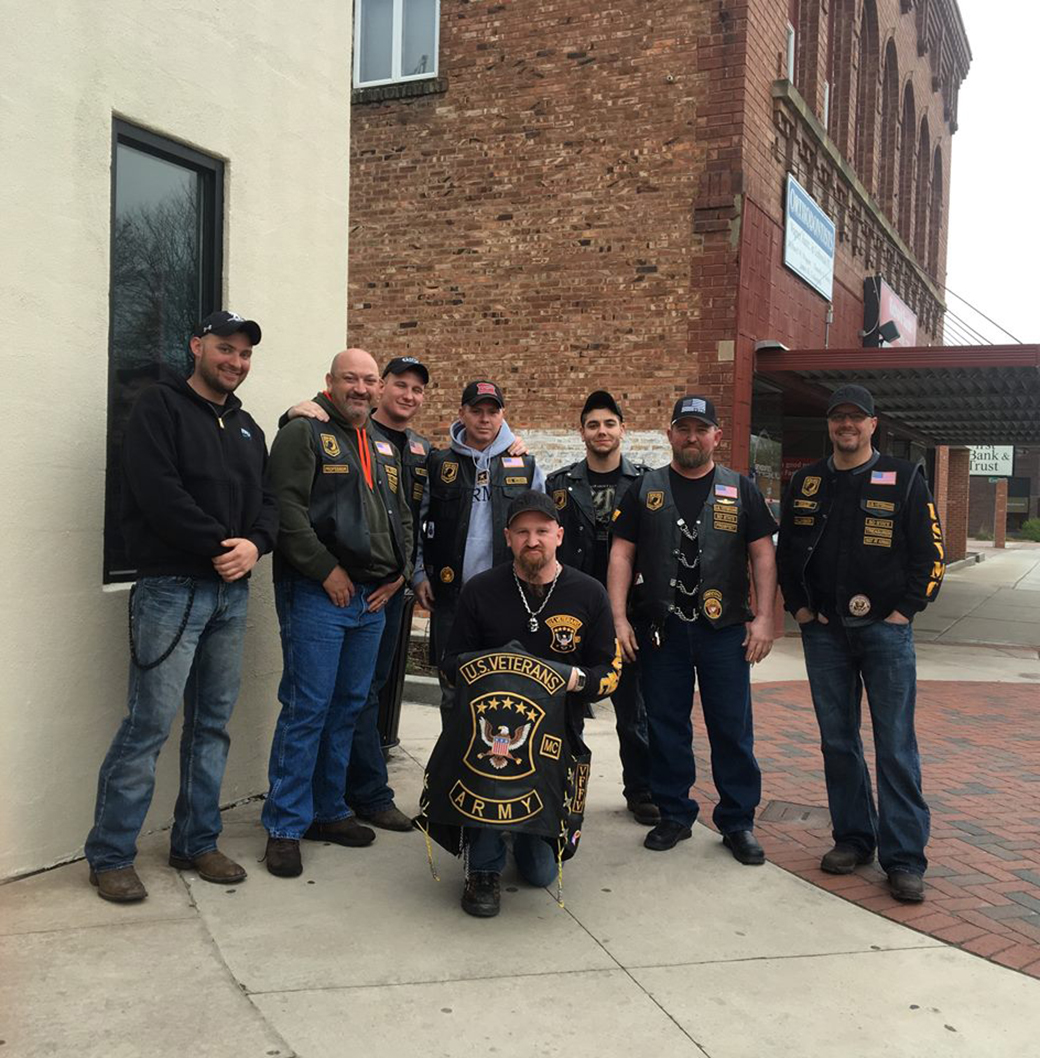
Project 22: the SVRC and the USVMC unite to give voice to a silent war
Every day, an average of 22 lives are lost to a silent war: veteran suicide.
It’s a war that’s largely unknown, and largely unseen. It’s a war fought in isolation, within the minds of those who struggle every day to overcome their pasts and find their purpose in life. If something doesn’t change, an estimated 8,030 lives could be lost this year to veteran suicide.
The USD Student Veteran Resource Center (SVRC) and the U.S. Veterans Motorcycle Club (USVMC) came together to take a stand against veteran suicide by hosting a screening of “Project 22” at the Twin Coyote Theater in Vermillion on April 18. The film follows two combat Veterans, Daniel Egbert and Matt King, who set out on a 6,500 mile motorcycle journey to meet with researchers, healthcare providers and other veterans. After having their own struggles with suicide, they wanted to raise awareness about the issue and let others know they’re not alone.
“For me, the lowest time was thinking I was all alone in it,” King said in the movie. “Thinking, well, all these other guys are fine. Why am I not the hard tough Veteran that is not affected?”
The movie, made in 2014, showed that suicide deaths had outnumbered combat deaths for four years in a row. The movie also stated that one in six Iraq and Afghanistan Veterans suffered from PTSD.
The movie emphasized that this is an issue that can affect any veteran, anywhere, and in many different ways.
There was also a focus on isolation, as King and Egbert kept encountering it among veterans, many of which said they felt isolated or felt as though no one understood them, resulting in a lack of interpersonal connections.
“If you don’t have somebody that you can talk to where they actually understand you on the same emotional level, it is lost in translation,” said one of the Veterans featured in the film. “So you step back and you kind of crawl into yourself and you start to die.”
The mission of “Project 22” was to bring this issue to the forefront of people’s minds and to highlight the benefit once veterans started interacting with people that understood them, according to event organizers.
“It doesn’t matter who you are or what your trauma is,” King said. “If you can connect with somebody that understands, you can make it. That’s the hope.”
Organizations like the SVRC and the USVMC strive to form those bonds by giving veterans a place to connect and a common purpose. Both organizations are involved in fundraising and raising awareness to support veterans throughout the year.
The proceeds from this screening of “Project 22” went to the Berakhah house, a homeless shelter for Veterans in Sioux Falls.
Michelle Pliska, the SVRC coordinator, stressed the importance of reaching out, helping out and raising awareness.
“Hope can come from a lot of different places, but I think it comes a lot from our connections,” Pliska said. “Just put yourself out there until you find your thing.”
Pliska said she was the one who made the final push to get the movie. Both groups had been trying to screen it since last fall after it was shown in Sioux Falls by another veteran motorcycle group, the Leathernecks.
Steve Nunez, an Iowa National Guard combat veteran and senior at USD, was also part of the efforts to bring “Project 22” to Vermillion.
“For the longest time I did what the documentary said,” Nunez said. “Instead of integrating myself into the university, I just isolated myself because I felt I was just different.”
He had heard of the SVRC, but it wasn’t until he saw the group tabling in the Muenster University Center that he decided to learn more about it.
“I went there, and it was the greatest decision I’ve ever made,” Nunez said. “It is somewhere I can be myself. We have all experienced something together, even if it is just training… and when we talk to each other, there is just a lot of understanding. We just know.”
Krisztian Fasi, a Navy non-combat veteran and member of the SVRC, said he felt the documentary had one major takeaway.
“You’re not alone,” Fasi said. “Outside of the whole idea of hope, just know that there is an end to it all.”
Pliska said there are about 500 USD students that are veterans or in the National Guard or Reserves. That number increases significantly when taking dependents, children or spouses, into account.
The SVRC is available to all of these students, and provides tutoring, reintegration services, peer mentoring, free printing, free counseling services and more. They have regular meetings every Thursday at 5 p.m., but have also have held art therapy sessions, hosted guest speakers, visited the Berakhah house and held yoga sessions, among other things.
Pliska said these events show how the SVRC strives not only to unite veterans, but also to bring understanding to the public. Though the film had a strong theme of veterans helping veterans, there were also many civilians who were fighting to make a difference. In a war that is silently consuming so many lives, every voice matters, she said.
“We’ve got one percent of our population that is actively serving,” Pliska said. “We have one percent out there defending the rest of us and fighting for us. I think it is our job as civilians to hear their stories and to promote and honor their service.”

